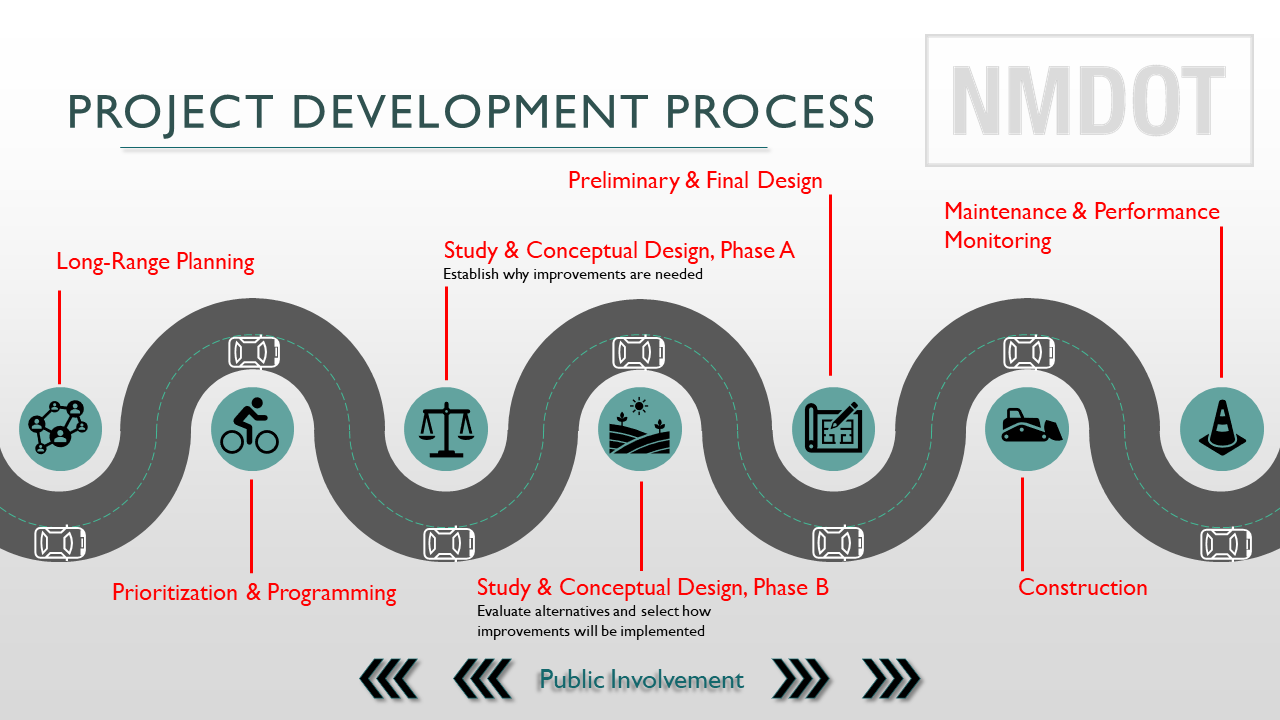Building a Road Takes Time
The development of transportation projects is a multi-phased, multi-year process that involves a significant commitment of technical and financial resources. Project development involves six major phases including (1) long-range planning, (2) prioritization and programming, (3) study scoping and conceptual design (4) preliminary and final design, (5) construction, and (6) maintenance and performance monitoring.
- 1. LONG-RANGE PLANNING
- 2. PRIORIORITIZATION and PROGRAMMING
- 3. STUDY SCOPING and CONCEPTUAL DESIGN
- 4. PRELIMINARY and FINAL DESIGN
- 5. PROJECT CONSTRUCTION
- 6. MAINTENANCE and PERFORMANCE MONITORING
1. LONG-RANGE PLANNING serves to establish long-range goals, objectives, and system needs at the statewide, regional, or metropolitan planning area level. By federal law, states must develop and adopt a Long-Range Statewide Transportation Plan (LRSTP) that identifies transportation needs at least 20 years into the future. The LRSTP is developed in cooperation with regional transportation planning organizations and metropolitan planning organizations (MPOs) in New Mexico. The LRSTP address the movement of people and goods throughout New Mexico, and it provides a strategic framework to guide transportation decision-making in New Mexico.
2. PRIORIORITIZATION and PROGRAMMING is a collaborative effort involving the state, local jurisdictions, and implementing agencies. It is the process by which near-term transportation needs are identified and prioritized, and funding is allocated. At the statewide level, the NMDOT’s Statewide Transportation Improvement Program (STIP) provides a listing of prioritized and funded projects over a four-year period (as well as two additional years of unfunded projects). Although by federal law, transportation programs must be updated at least every four years, the NMDOT practice is to update the STIP every two years.
3. STUDY SCOPING and CONCEPTUAL DESIGN is the process whereby the improvement needs identified in the transportation improvement program are defined, the level of effort is determined, and improvement alternatives are developed and evaluated. This process establishes the “design concept and scope” for the proposed action and obtains authorization for federal funding. Project scoping and conceptual design are accomplished by performing a location study. While the type of study may vary, the general approach is the same such as development of a project purpose and need; development of alternatives; assessing environmental, social, and cultural effects; coordinating with stakeholder agencies; and conducting public outreach. A study is part of Phase I of the NMDOT project development process in three distinct phases commonly referred to as Phase IA, IB, and IC. Phase IA and IB serve to develop, evaluate, and refine the range of possible alternatives to achieve the need for an action. Phase IC involves preparation of an environmental document and subsequent processing in accordance with the National Environmental Policy Act.
4. PRELIMINARY and FINAL DESIGN involves the preparation of detailed plans, specifications, and estimates that will be used for project construction. Preliminary design is considered Phase ID in the project development process. Final design is Phase II. The last stage of final design is called Plans, Specifications, and Estimates (PS&E), which are the plans used by construction contractors to bid on and construct projects.
5. PROJECT CONSTRUCTION is considered Phase III of the project development process. It involves construction of the authorized improvements and final inspection of the completed project before it is opened for public use.
6. MAINTENANCE and PERFORMANCE MONITORING – the project development process continues even after a completed project is opened for public use. Periodic maintenance of the facility is necessary to maintain the roadway and right-of-way and to keep the facility in safe operating condition. Monitoring of the facility is important to track changes in traffic volume, vehicle classification, travel speeds, accident rates, and other factors. Monitoring data serves to identify emerging needs and is used as input to long-range planning and prioritization programming.
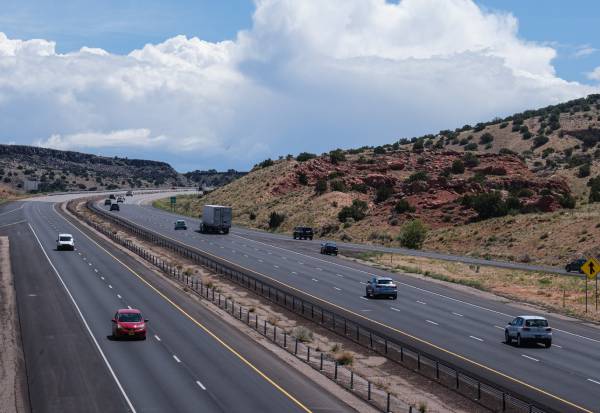
Long-Range Statewide Transportation Plan
The New Mexico 2045 Plan outlines the 25-year transportation vision for New Mexico and provides NMDOT with information, guidance, and direction to support strategic decision-making.

State Transportation Improvement Program
The State Transportation Improvement Program (STIP) Unit is responsible for developing the four-year, fiscally constrained, list of federally funded and regionally significant projects called the STIP.
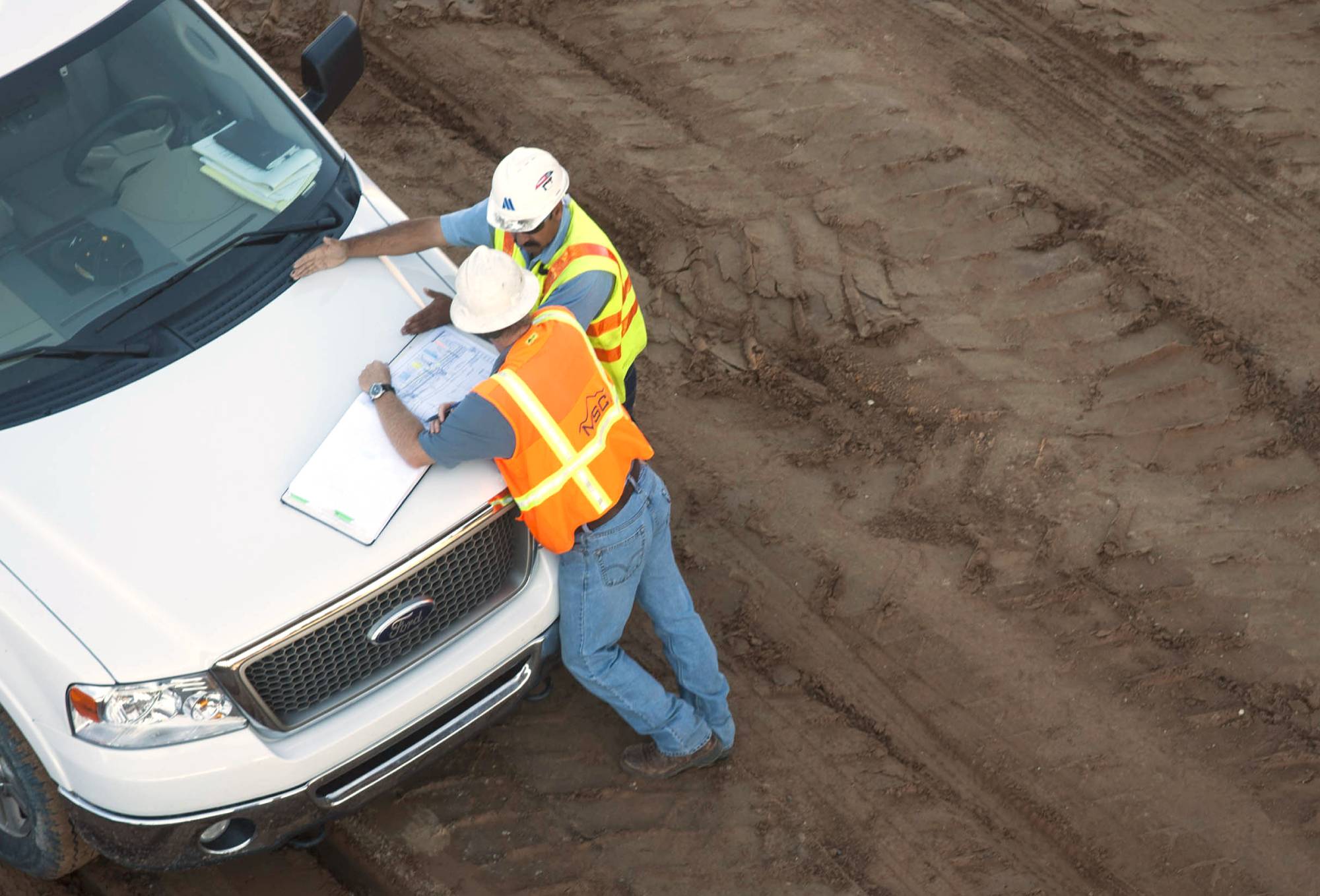
Infrastructure Division
The Infrastructure Division has the experience and expertise to take any transportation project from concept through detailed design.
Active Projects
The interactive mapping application in the link below contains information about Active Projects that are in either study and design or construction. Learn more details about projects underway in your community.
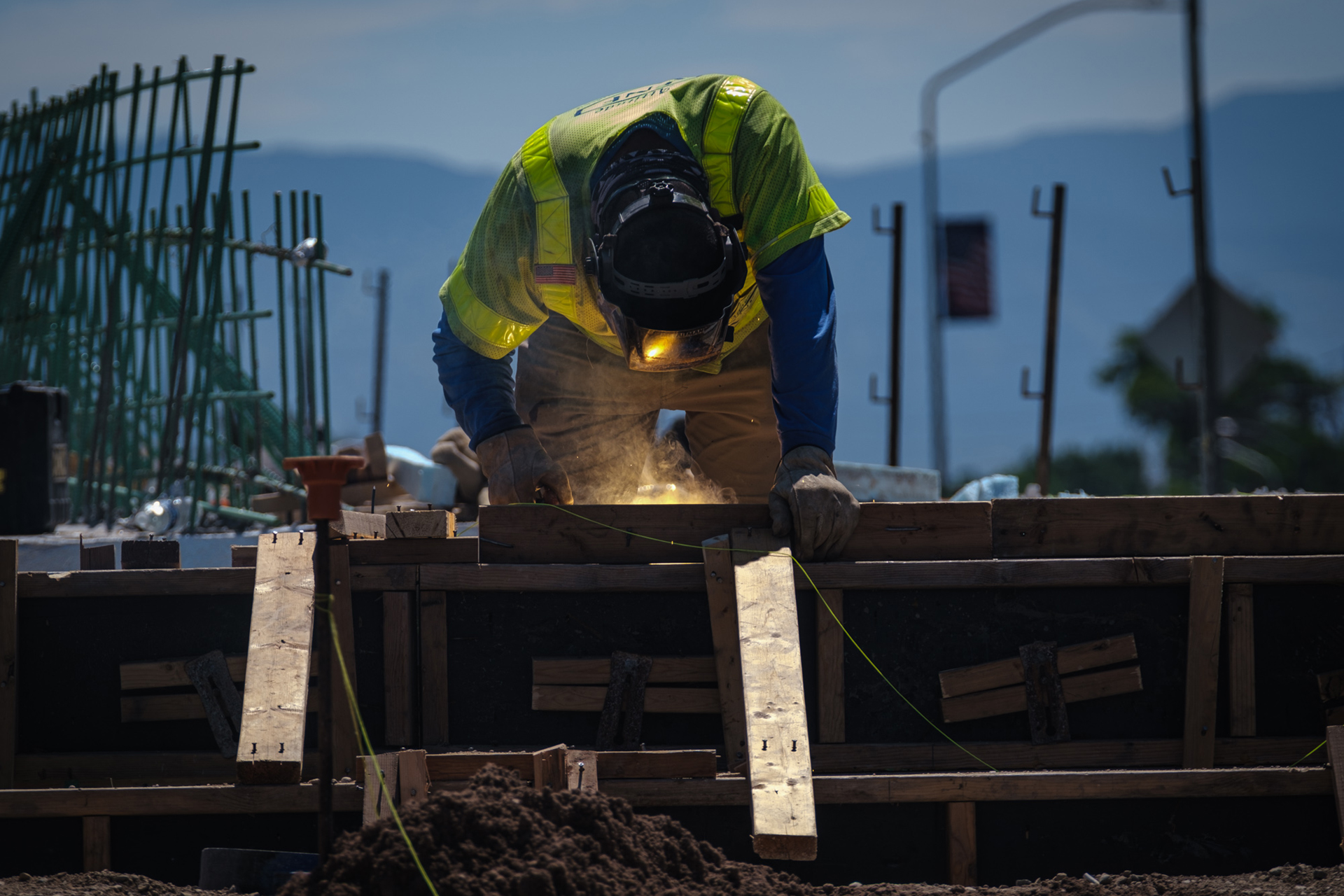
Construction and Civil Rights Bureau
The State Construction and Civil Rights Bureau’s goal is to provide the resources necessary to insure the quality of construction projects by improving decisions made in the field, making information available for training and to maintain statewide consistency.
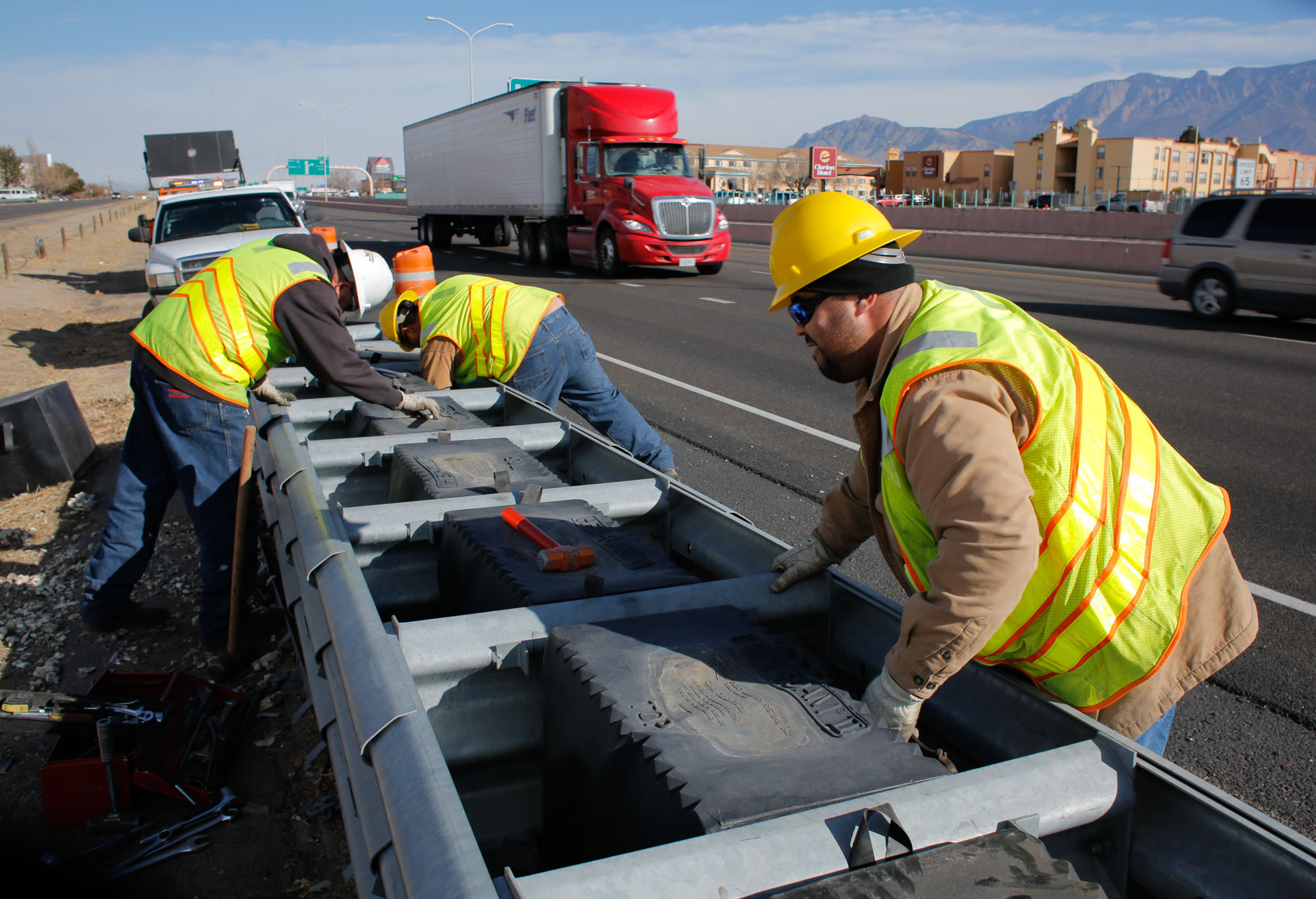
State Maintenance Bureau
The State Maintenance Bureau actively works on the preservation and life extension of all of New Mexico’s transportation assets.
Learn More about Upcoming Public Events and Local Government and Tribal Projects.
Public Involvement
The NMDOT offers many opportunities for citizens to learn about and to share comments on transportation projects and issues. Upcoming and previous meetings, events, or comment opportunities can be found at the link below.
Government to Government
The GTG Unit administers contracts for seven RTPO and five MPOs, and works closely with NMDOT’s District Offices, STIP Unit, Design Regions and other Divisions to ensure proactive enforcement of state and federal laws.
Follow Us on Facebook
Follow Us on Twitter
Sign up for NM Roads

